The project involves creating a temperature sensor that outputs readings on an 8x8 LED matrix using two shift registers (74HC595) for serial to parallel data transfer. The Arduino controls the scrolling messages and manages the refresh rate by employing an interrupt-driven approach, with calibration done via a potentiometer. Key components include wiring diagrams, calibration processes, and custom code for the functionality of the temperature sensor and LED display.

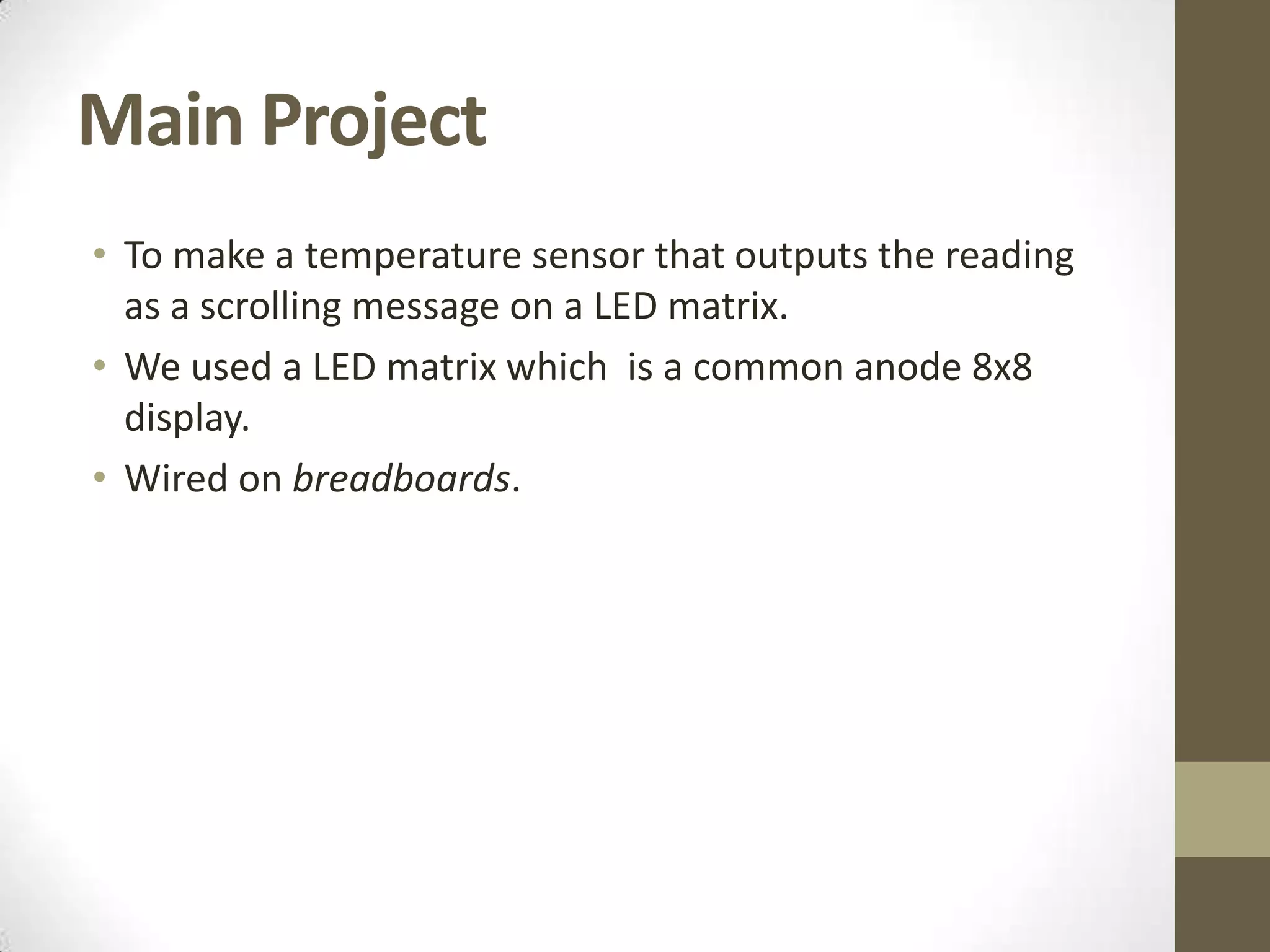
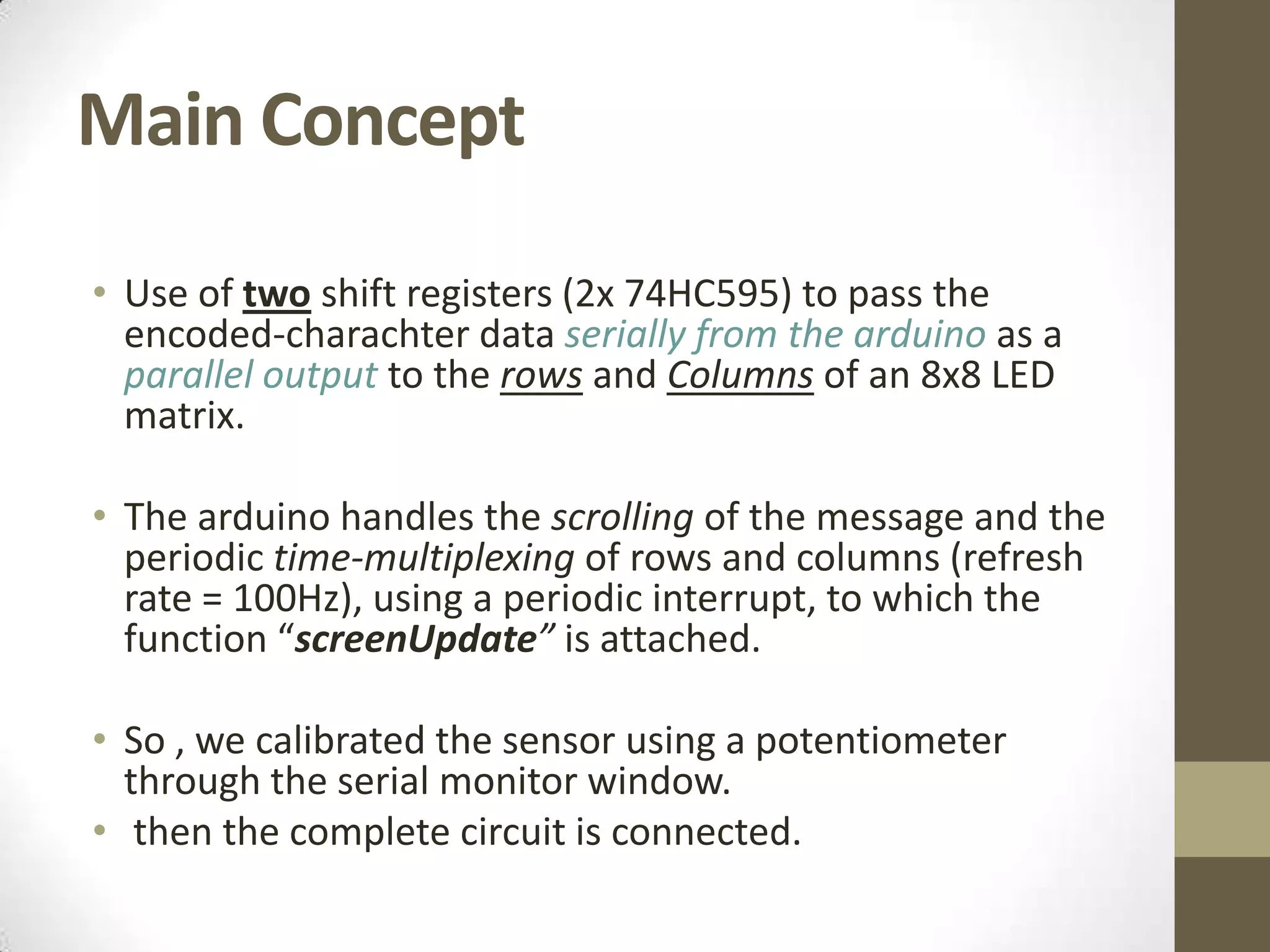
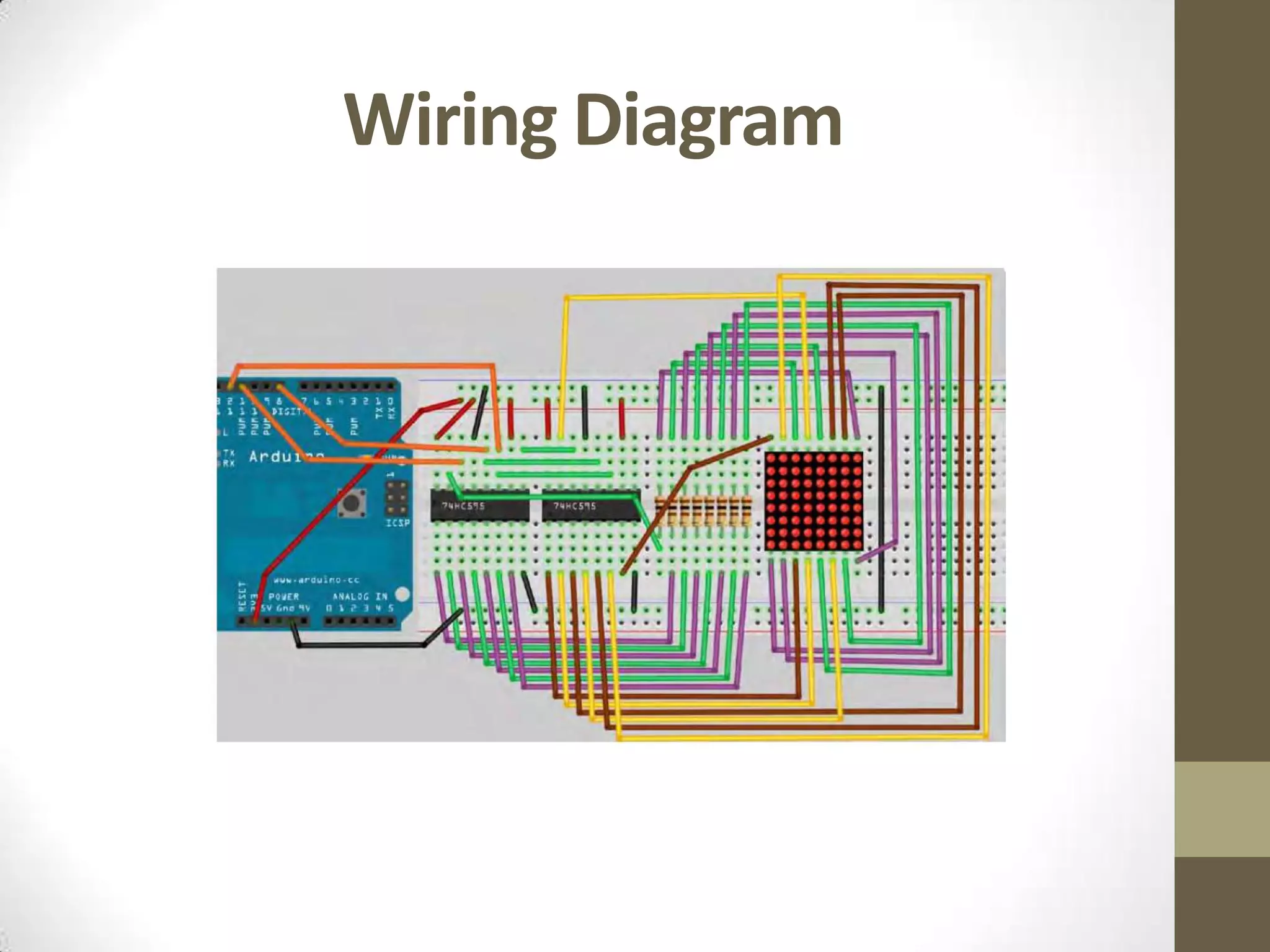
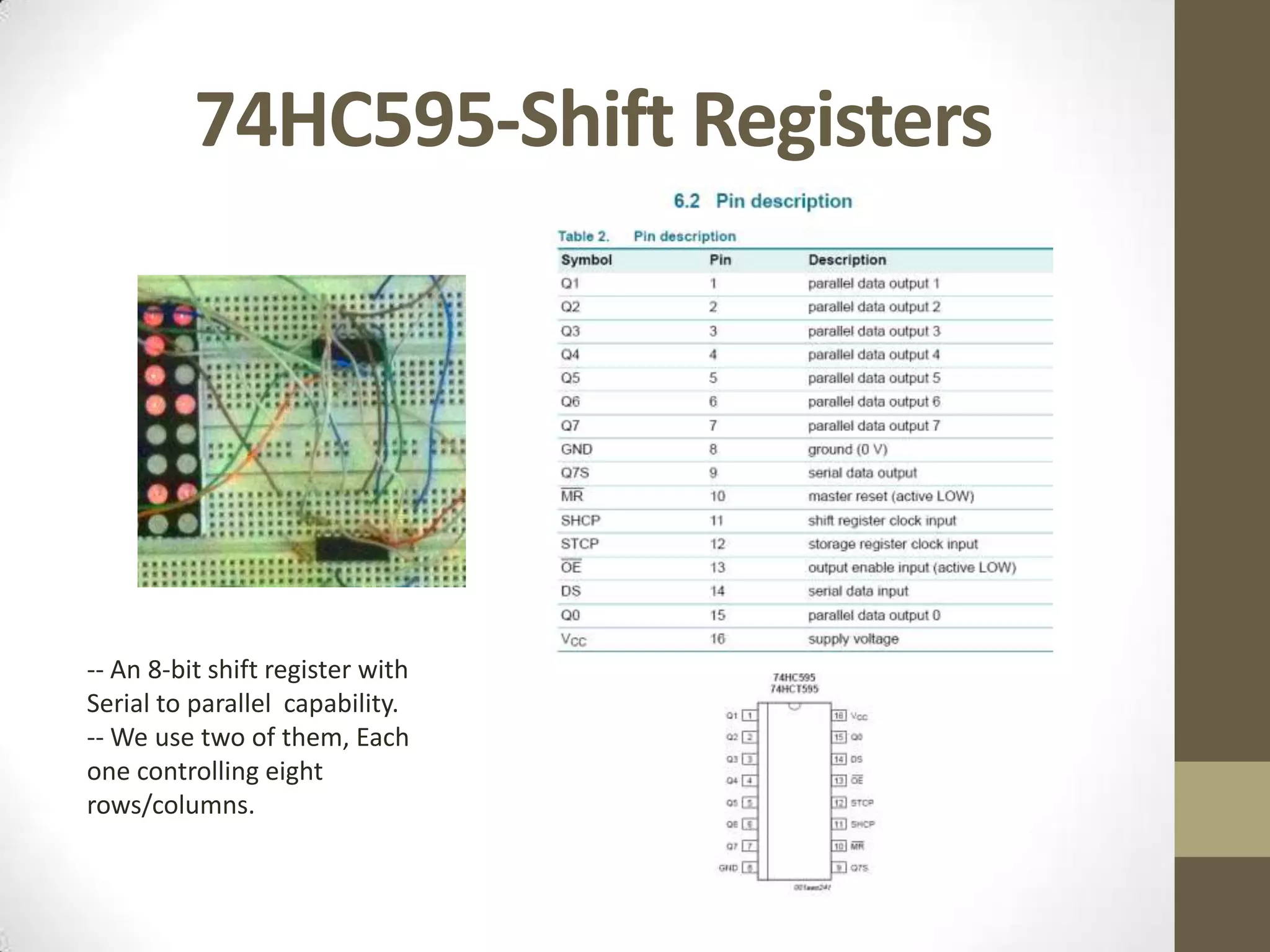
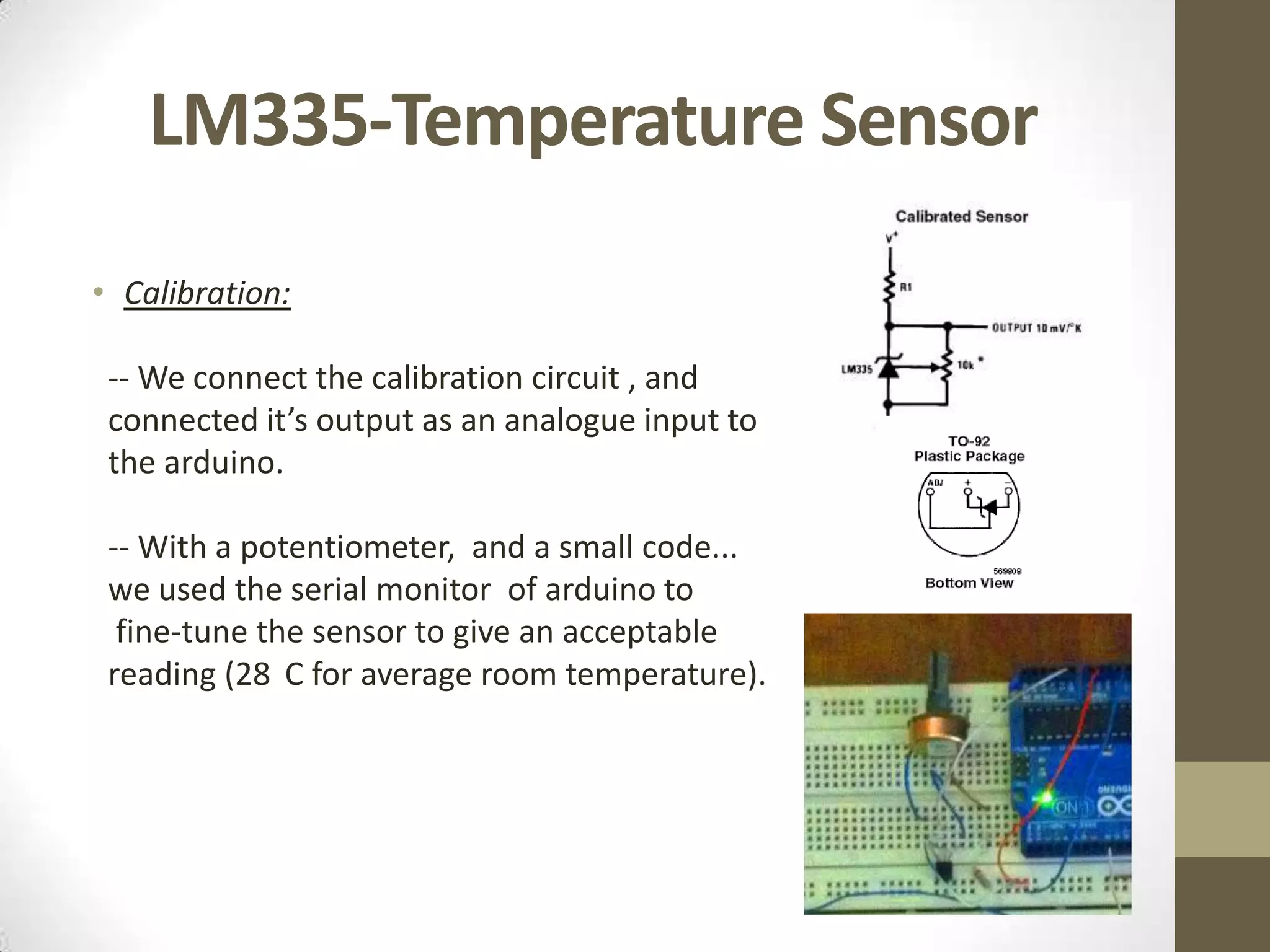
![CODE • #include <TimerOne.h> • #include <charEncodings.h> // Each charachter and it’s (8x8 LED matrix)-mapped code. • // BASIC PIN CONFIGURATION • // AND DECLARATIONS • //Pin connected to Pin 12 of 74HC595 (Latch) • int latchPin = 8; • //Pin connected to Pin 11 of 74HC595 (Clock) • int clockPin = 12; • //Pin connected to Pin 14 of 74HC595 (Data) • int dataPin = 11; • // pin for the potentiometer to control the scrolling speed • int potPin = 5; • // pin for reading the temperature • int tempPin = 4; • // this is the gobal array that represents what the matrix • // is currently displaying • uint8_t led[8];](https://image.slidesharecdn.com/temperaturesensorwithaledmatrixdisplayarduinocontrolled-120914165450-phpapp01/75/Temperature-sensor-with-a-led-matrix-display-arduino-controlled-7-2048.jpg)
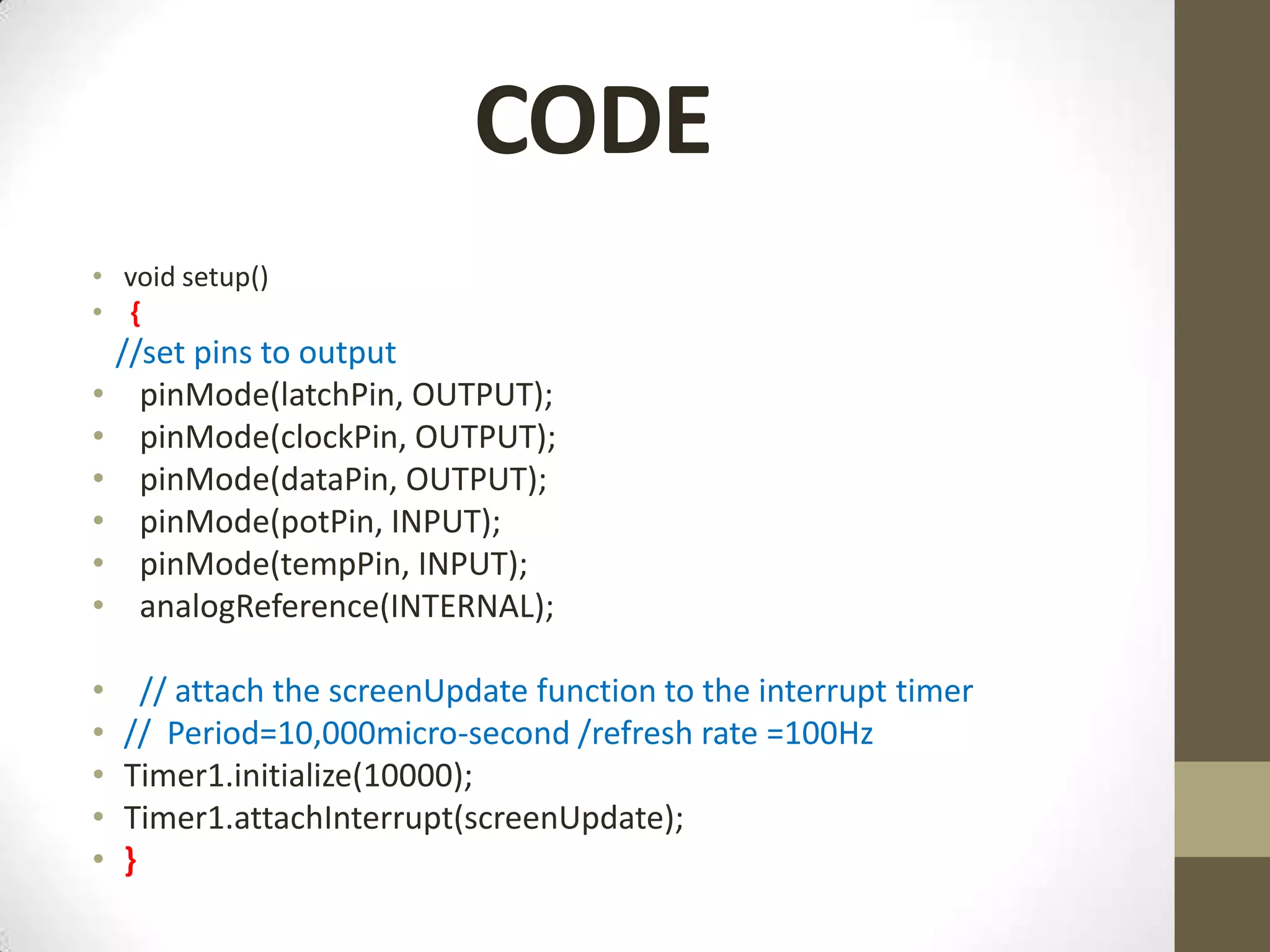
![CODE • //Continuous LOOP • void loop() • { • long counter1 = 0; • long counter2 = 0; • char reading[10]; • char buffer[18]; • if (counter1++ >=100000) { • counter2++; • } • if (counter2 >= 10000) { • counter1 = 0; • counter2 = 0; • } getTemp(reading); displayScrolledText(reading); }](https://image.slidesharecdn.com/temperaturesensorwithaledmatrixdisplayarduinocontrolled-120914165450-phpapp01/75/Temperature-sensor-with-a-led-matrix-display-arduino-controlled-9-2048.jpg)
![The (displayScrolledText ) Function • void displayScrolledText(char* textToDisplay) • { • int textLen = strlen(textToDisplay); • char charLeft, charRight; • // scan through entire string one column at a time and call • // function to display 8 columns to the right • for (int col = 1; col <= textLen*8; col++) • { • • // if (col-1) is exact multiple of 8 then only one character • // involved, so just display that one • if ((col-1) % 8 == 0 ) • { • char charToDisplay = textToDisplay[(col-1)/8]; • • for (int j=0; j<8; j++) • { • led[j] = charBitmaps[charToDisplay][j]; • } • } • else • { • int charLeftIndex = (col-1)/8; • int charRightIndex = (col-1)/8+1; • charLeft = textToDisplay[charLeftIndex];](https://image.slidesharecdn.com/temperaturesensorwithaledmatrixdisplayarduinocontrolled-120914165450-phpapp01/75/Temperature-sensor-with-a-led-matrix-display-arduino-controlled-10-2048.jpg)
![• // check we are not off the end of the string • if (charRightIndex <= textLen) • { • charRight = textToDisplay[charRightIndex]; • } • else • { • charRight = ' '; • } • setMatrixFromPosition(charLeft, charRight, (col-1) % 8); • } • int delayTime = analogRead(potPin); • delay (delayTime); • } •}](https://image.slidesharecdn.com/temperaturesensorwithaledmatrixdisplayarduinocontrolled-120914165450-phpapp01/75/Temperature-sensor-with-a-led-matrix-display-arduino-controlled-11-2048.jpg)
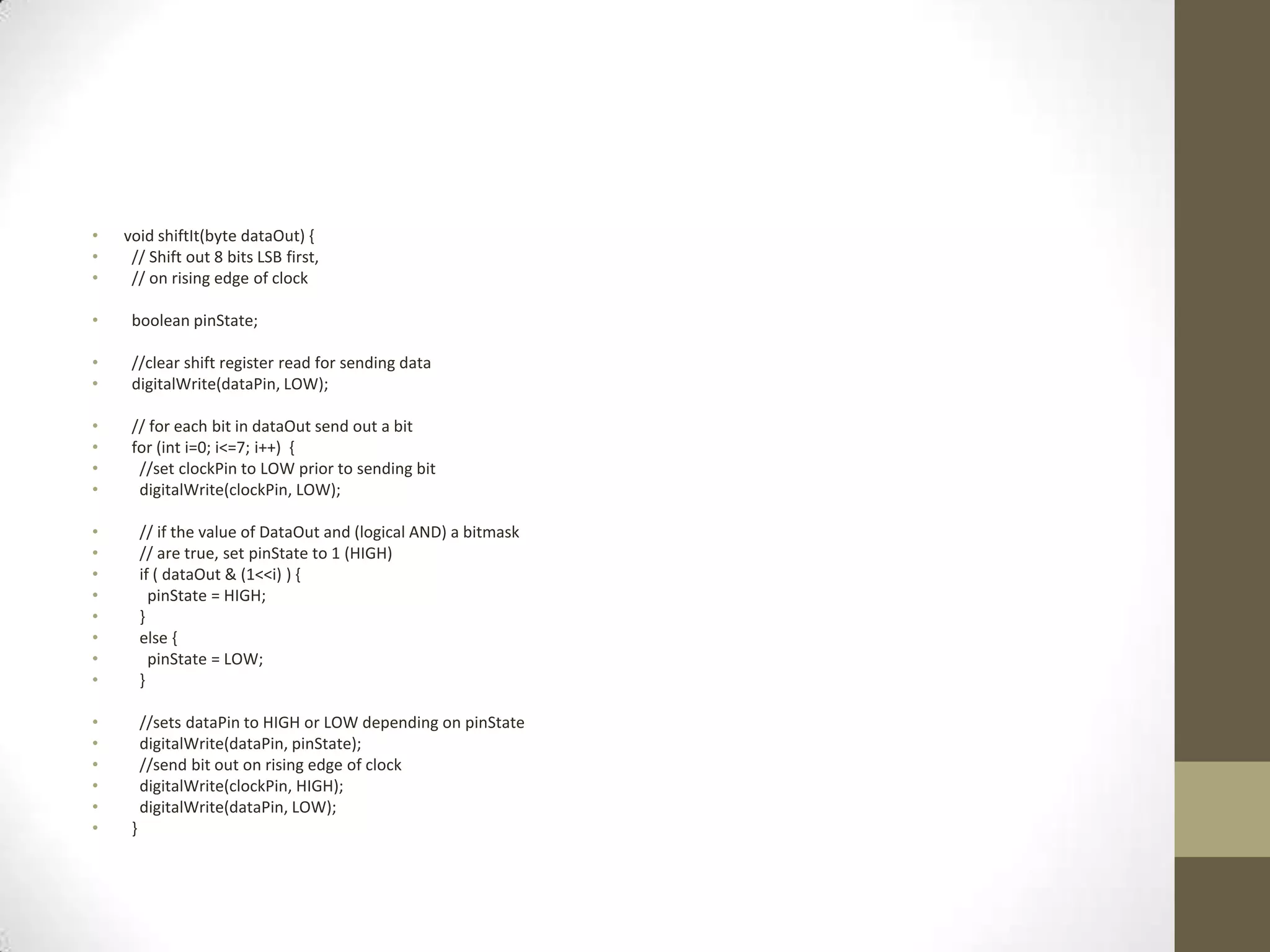
![• //stop shifting • digitalWrite(clockPin, LOW); • } • boolean isKeyboardInput() { • // returns true is there is any characters in the keyboard buffer • return (Serial.available() > 0); • } • } • // terminate the string • readString[index] = '0'; • }](https://image.slidesharecdn.com/temperaturesensorwithaledmatrixdisplayarduinocontrolled-120914165450-phpapp01/75/Temperature-sensor-with-a-led-matrix-display-arduino-controlled-13-2048.jpg)
![• void setMatrixFromPosition(char charLeft, char charRight, int col) { • // take col left most columns from left character and bitwise OR with 8-col from • // the right character • for (int j=0; j<8; j++) { • led[j] = charBitmaps[charLeft][j] << col | charBitmaps[charRight][j] >> 8-col; • } • } • void screenUpdate() { • uint8_t col = B00000001; • for (byte k = 0; k < 8; k++) { • digitalWrite(latchPin, LOW); // Open up the latch ready to receive data • shiftIt(~led[7-k]); • shiftIt(col); • digitalWrite(latchPin, HIGH); // Close the latch, sending the registers data to the matrix • col = col << 1; • } • digitalWrite(latchPin, LOW); • shiftIt(~0 ); • shiftIt(255); • digitalWrite(latchPin, HIGH); • }](https://image.slidesharecdn.com/temperaturesensorwithaledmatrixdisplayarduinocontrolled-120914165450-phpapp01/75/Temperature-sensor-with-a-led-matrix-display-arduino-controlled-14-2048.jpg)
![• void getTemp(char* reading) { • int span = 20; • int aRead = 0; • long temp; • char tmpStr[10]; • // average out several readings • for (int i = 0; i < span; i++) { • aRead = aRead+analogRead(tempPin); • } • aRead = aRead / span; • temp = ((100*1.1*aRead)/1024)*10; • reading[0] = '0'; • itoa(temp/10, tmpStr, 10); • strcat(reading,tmpStr); • strcat(reading, "."); • itoa(temp % 10, tmpStr, 10); • strcat(reading, tmpStr); • strcat(reading, "C"); • }](https://image.slidesharecdn.com/temperaturesensorwithaledmatrixdisplayarduinocontrolled-120914165450-phpapp01/75/Temperature-sensor-with-a-led-matrix-display-arduino-controlled-15-2048.jpg)